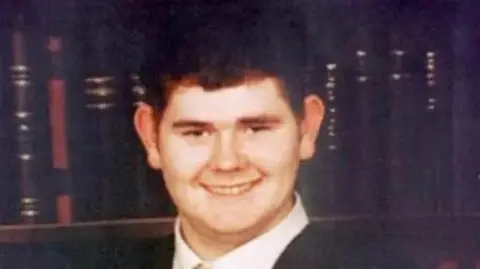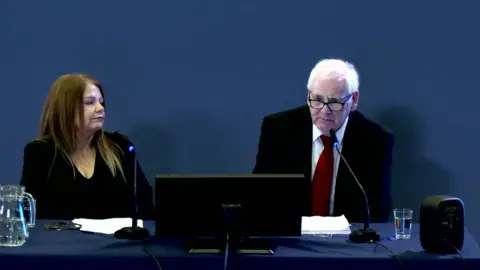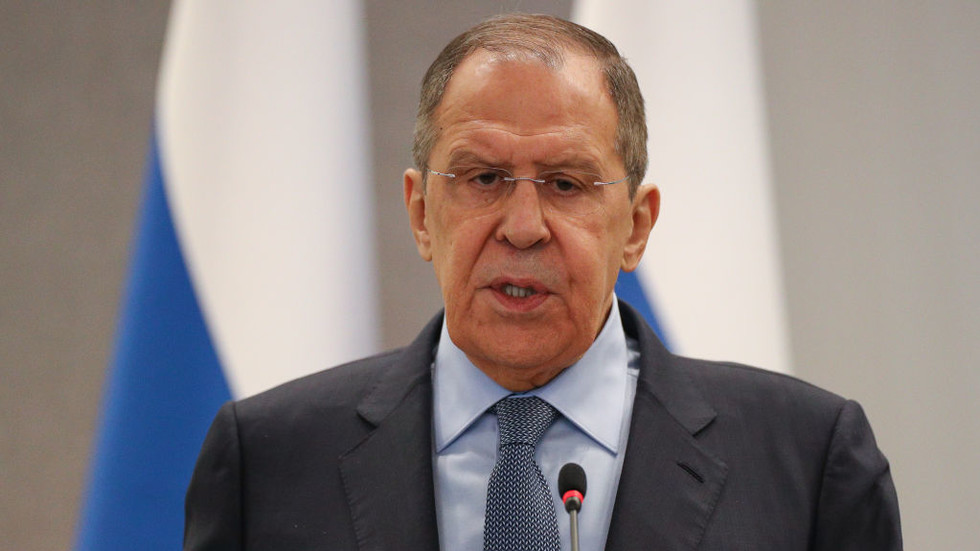Catherine Morrison
BBC News NI, in Omagh

 Family handout
Family handout
Aiden Gallagher was 21 when he was murdered by the Real IRA
The Omagh bombing was a declaration of war by the Real IRA on an unsuspecting civilian population for their own political aims, a man who lost his son in the explosion has told the public inquiry.
Michael Gallagher, whose 21-year-old son Aiden was killed, said while the group described themselves as "freedom fighters", they were far from it.
He told the inquiry: "They are freedom takers, the victims have ended up being the freedom fighters."
After a happy childhood with his parents, Michael and Patsy, and his two sisters, Aiden grew into a mature and motivated young man, a mechanic fascinated with cars and aircraft.
"He had a very wide group of friends and I'm very proud to say that we live in a country where there's a lot of division and bigotry on both sides, but we never allowed that to penetrate our family," Mr Gallagher told the inquiry.
"We chose our friends because of the contents of their heart, not because of their religion or their politics.
"Aiden's friends were varied and many, and that's something we're extremely proud of."
The Real IRA bomb killed 29 people, including a woman who was pregnant with twins, on 15 August 1998.
The attack took place four months after the signing of the 1998 Good Friday Agreement.
This is the second week and day five of the inquiry, which is happening in Strule Arts Centre in the County Tyrone town.
The Gallagher family had previously suffered in the Troubles. Michael Gallagher's younger brother Hugh was murdered by the IRA in 1984.
He explained why they voted yes in the Good Friday Agreement: "We hoped that we had turned a corner, we had started a new chapter in Irish history where people could live together and play together and enjoy and appreciate each other's company and we could settle our differences by the ballot box not by the bomb or the bullet."


Michael Gallagher at the inquiry, alongside his daughter Cat
Mr Gallagher said the timing of the bombing was "absolutely cruel".
"People often describe the Omagh bomb as the worst of the Troubles, it was actually the first atrocity of peacetime," he said.
Aiden had gone in to Omagh town centre to buy a new pair of jeans. His father said his last words were: "I won't be long."
Michael Gallagher heard the blast and knew it was a bomb.
After several journeys into town, to the hospital, he was eventually taken to a makeshift morgue where he identified his son's body.
His "greatest concern" driving home as dawn was breaking, was how he was going to tell his family that Aiden would not be coming home.
"That was extremely painful and difficult. In the end I didn't really need to say anything."
What was the Omagh bomb?
Timeline of events
The bomb exploded in Omagh town centre on a busy Saturday afternoon.
The attack took place four months after the signing of the 1998 Good Friday Agreement.
The Real IRA - a dissident republican paramilitary group - disagreed with the Provisional IRA's decision to call a ceasefire ahead of the talks and continued to plant car bombs in towns across Northern Ireland.
But the Omagh bomb was by far the RIRA's most deadly attack.
In addition to the dead, more than 200 other people were wounded, some of whom survived with life-changing injuries.
Who carried out the Omagh bomb?
Three days after the attack, the Real IRA released a statement claiming responsibility for the explosion.
It apologised to "civilian" victims and said its targets had been commercial.
Almost 27 years on, no-one has been convicted of carrying out the murders by a criminal court.
In 2009, the judge in that case ruled four of the men - Michael McKevitt, Liam Campbell, Colm Murphy and Seamus Daly were all liable for the Omagh bomb.
The four men were ordered to pay a total of £1.6m in damages to the relatives, but appeals against the ruling delayed the compensation process.
A fifth man, Seamus McKenna, was acquitted in the civil action and later died in a roofing accident in 2013.

 2 hours ago
2
2 hours ago
2









